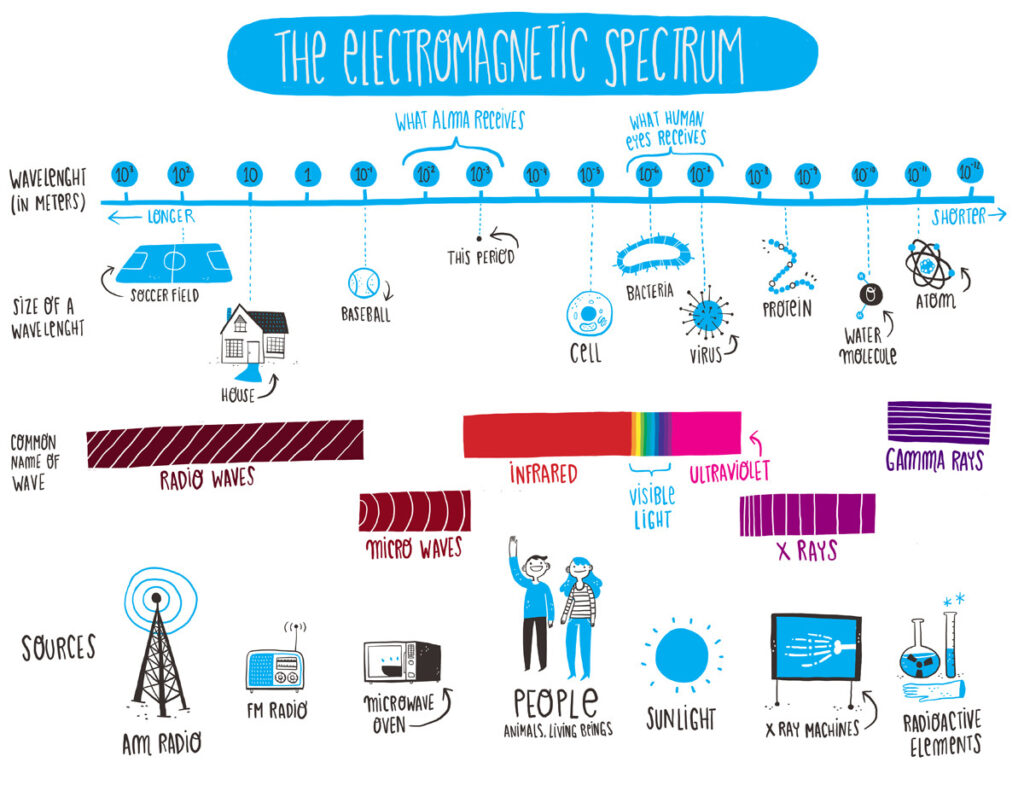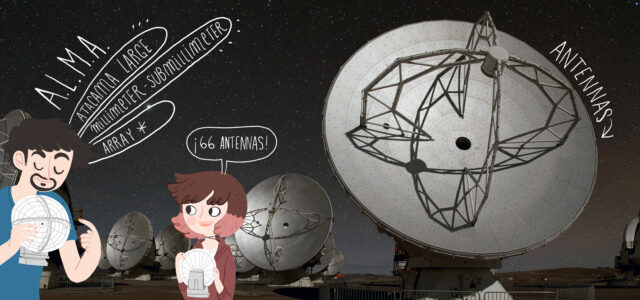What are millimeter waves?
Read time: 3 minutes
If your ears are good, you can hear very high tones. Children’s ears are usually better than the ears of grown-ups. So you might be able to hear very high-pitch sounds that your father or mother cannot hear.
Even then, you can’t hear everything. If the tone is too high, you can’t hear it anymore. But your dog can! Dogs not only have very good noses, they also have very good ears. They respond to dog whistles that produce sounds too high for any human to hear. So there’s more sound in the world than your ears can hear. And the same is true for light. There’s more light in the world than your eyes can see.
You can see all kinds of colors. Red light has the longest light waves that your eyes can detect. Then there’s orange, yellow, green, blue, indigo, and finally violet light, which has the shortest light waves that humans can see.
But there are other colors that are ‘invisible’ to people, like infrared and ultraviolet. Infrared light waves are longer than red waves. Ultraviolet light waves are shorter than violet waves. Some animals can see these ‘invisible’ colors. For instance, snakes can see infrared light. Bees can see ultraviolet light.

There are many other types of ‘light waves’, or rays. When you call someone with a cell phone, you are using radio waves. Your dentist can look right through your cheek to make photos of your teeth by using X-rays. Furthermore, there are gamma rays, millimeter waves, and submillimeter waves. These are all types of light that our eyes cannot see. Too bad we can only see ‘visible’ light! It’s like going to a concert with a hearing impairment so you only can hear part of the music and you miss out on the very low and the very high tones.
Stars, nebulas and galaxies emit all kinds of light. The ‘visible’ light from the Universe can be seen with a normal telescope. But to study other types of light, you need special instruments. To catch radio waves, millimeter waves and submillimeter waves from the sky, astronomers use big antennas. They are often called radio telescopes, or radio dishes.
The ALMA observatory consists of 66 antennas that catch millimeter waves and submillimeter waves from the Universe. They’re even longer waves than the ones of infrared light. Your eyes can’t see millimeter waves or submillimeter waves. But they are there, and ALMA is able to catch them. Which is good, because by studying millimeter and submillimeter waves, astronomers can learn new things about the Universe. Things that we could never learn if we only observed visible light. For example, ALMA has spotted sugar molecules in the Universe!



